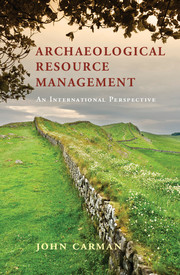3 - Systems of regulation
from Part I - History and Principles
Published online by Cambridge University Press: 05 September 2015
Summary
Every country in the world has some form of law relating to its cultural heritage. These range from the draconian (and sometimes relatively ineffective: Cleere 1984c, 130) to the more loosely formulated and generally respected. In between lie the majority, more or less complex and more or less complied with. Some are ‘home-grown’ and reflect particular local circumstances; others elsewhere are copied from neighbouring or more distant places; others again have been adopted from past rulers but remain in place nonetheless. We saw in Chapter 1 how important the passage of law has been to the development of the idea of preserving material from the past: in every case, laws proved a key means by which that preservation was effected. Laws, as the next section will discuss more fully, also serve to legitimise the idea of that preservation.
This chapter will conclude the thrust of this part of the book by looking at the different kinds of law that apply to the material heritage in different parts of the world and how they operate. As before, it is an exploration and celebration of difference rather than similarity. The common thread, however, lies in the adoption of law – of whatever kind and however written – as the key method of dealing with the cultural heritage. As has been seen in Chapter 1, it is the promulgation of laws to preserve old things – whatever the motivation driving it – that turns a mere private or sectional interest into something like ARM as we know it. In the current state of ARM, laws are even more crucial to the preservation of our heritage: without them, it can be cogently argued, there is no ARM. At the same time these laws need to be overseen and put into effect by appropriately empowered agents, whether of the state or independent. These agents too have their powers and duties defined by the laws that govern them and the material on which they act. Accordingly, even in so-called ‘non-statutory’ systems of ARM, law is the underlying mechanism and the ultimate repository of authority.
The sections of this chapter will offer introductory outlines to some of the forms which laws in this area can take, how they are organised and to be interpreted, and the relations between laws at the national and international level. The opening section will examine some of the justifications for laws in this area, a truly global discourse. A section on interpretation of laws will expose the clear differences that exist between legal systems, and which necessarily affect our understanding of them and any attempt at international comparison: these include the legal structures of federal versus unitary states, laws derived from traditions of Roman (and other) law and those grounded in English ‘common law’. An overview of international regulation – global in nature but subject to interpretation at the national level – follows. The laws of national territories will then come under scrutiny, representing different systems of laws: those assuming the state to be the proper owner of material versus those where private ownership is held to be the ideal, those favouring direct intervention and control versus more indirect and administrative mechanisms and so on. Overall, the paradox of the ubiquity of laws to achieve the same ends that take a remarkably diverse set of forms will become clear. A final section will review the effect the promulgation of legislative control has had on the field in terms of the development of professional agendas and associations, both national and international, and the ways these too regulate the practice of ARM.
- Type
- Chapter
- Information
- Archaeological Resource ManagementAn International Perspective, pp. 52 - 76Publisher: Cambridge University PressPrint publication year: 2015

